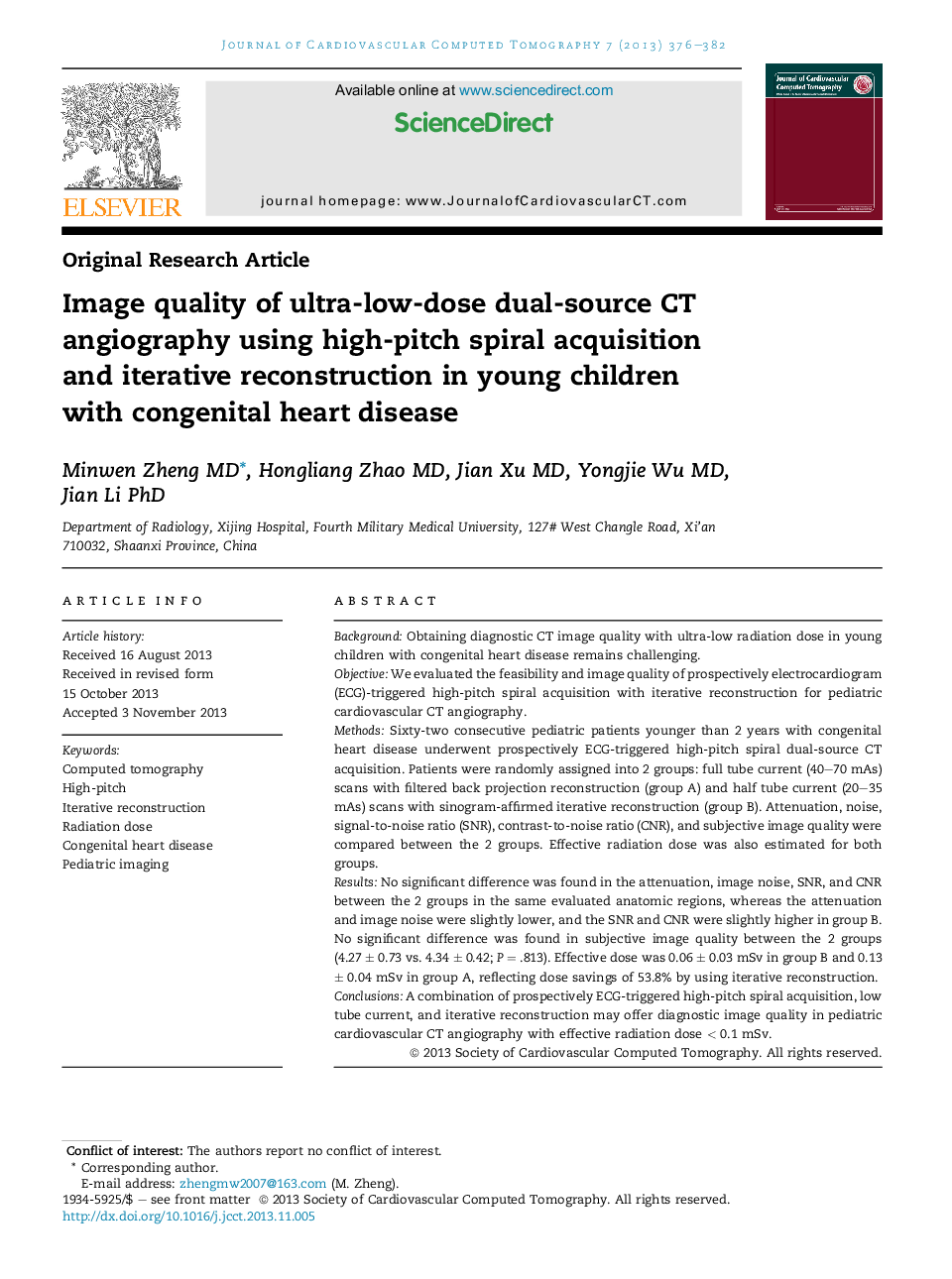| Article ID | Journal | Published Year | Pages | File Type |
|---|---|---|---|---|
| 2964809 | Journal of Cardiovascular Computed Tomography | 2013 | 7 Pages |
BackgroundObtaining diagnostic CT image quality with ultra-low radiation dose in young children with congenital heart disease remains challenging.ObjectiveWe evaluated the feasibility and image quality of prospectively electrocardiogram (ECG)-triggered high-pitch spiral acquisition with iterative reconstruction for pediatric cardiovascular CT angiography.MethodsSixty-two consecutive pediatric patients younger than 2 years with congenital heart disease underwent prospectively ECG-triggered high-pitch spiral dual-source CT acquisition. Patients were randomly assigned into 2 groups: full tube current (40–70 mAs) scans with filtered back projection reconstruction (group A) and half tube current (20–35 mAs) scans with sinogram-affirmed iterative reconstruction (group B). Attenuation, noise, signal-to-noise ratio (SNR), contrast-to-noise ratio (CNR), and subjective image quality were compared between the 2 groups. Effective radiation dose was also estimated for both groups.ResultsNo significant difference was found in the attenuation, image noise, SNR, and CNR between the 2 groups in the same evaluated anatomic regions, whereas the attenuation and image noise were slightly lower, and the SNR and CNR were slightly higher in group B. No significant difference was found in subjective image quality between the 2 groups (4.27 ± 0.73 vs. 4.34 ± 0.42; P = .813). Effective dose was 0.06 ± 0.03 mSv in group B and 0.13 ± 0.04 mSv in group A, reflecting dose savings of 53.8% by using iterative reconstruction.ConclusionsA combination of prospectively ECG-triggered high-pitch spiral acquisition, low tube current, and iterative reconstruction may offer diagnostic image quality in pediatric cardiovascular CT angiography with effective radiation dose < 0.1 mSv.
